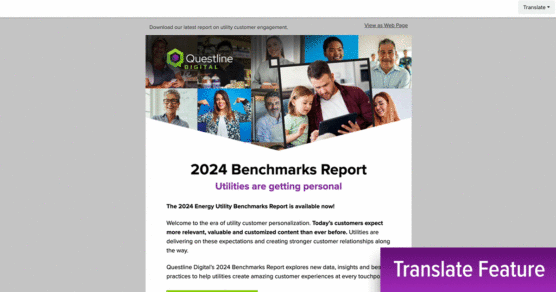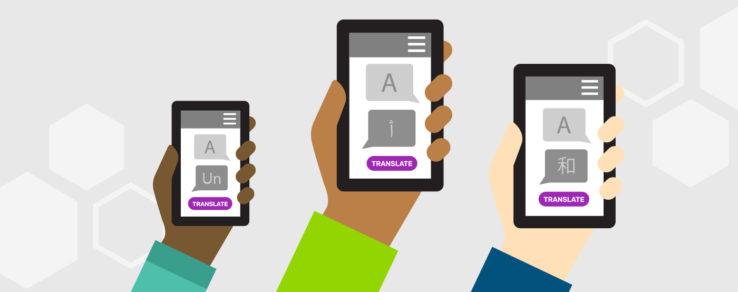Inclusivity in communications is more than just a buzzword; it’s a critical component of effective customer engagement and community building. Additionally, inclusive communications are essential for fostering a sense of belonging and equity among all customers.
Utilities have a unique responsibility to ensure their messages reach and resonate with every segment of their diverse community. Fostering inclusivity is especially important for utilities serving a broad customer base that relies on electricity, gas and water for daily living.
By prioritizing inclusive communication strategies, utilities can address customer needs and preferences. This approach not only helps build trust but also promotes a supportive relationship between a utility and its customers.
Understanding the Importance of Inclusive Communications
Inclusivity in utility communications means making all customers feel seen, heard and valued, regardless of their background. Fostering inclusivity involves recognizing and addressing the diverse needs of various customer groups, including different languages, cultural practices, literacy levels and accessibility requirements.
The importance of inclusivity in communications cannot be overstated. Inclusive communication strategies build trust and enhance customer satisfaction. When customers feel understood and respected, they are more likely to engage with communications, participate in programs and provide valuable feedback. This engagement, in turn, helps utilities improve their communications and better meet the needs of their entire customer base.
Examples of inclusive versus non-inclusive communications can illustrate the impact of these practices. Inclusive communications might include:
- Providing marketing messages in multiple languages
- Using simple and clear language for all literacy levels
- Guaranteeing accessibility for individuals with disabilities
On the other hand, non-inclusive communications may overlook these considerations, leading to misunderstanding, frustration and disengagement among customers. By learning from these examples, utilities can develop more inclusive communication strategies.
Understanding Your Diverse Community
Understanding your utility’s audience is essential to creating effective and inclusive communications. Utilities serve a wide range of individuals with varying preferences, cultural backgrounds and circumstances. To tailor communications, utilities should gather and analyze data about their customers’ demographics. This process might involve collecting information, such as age, language preferences, income levels and additional needs, that can help utilities craft messages that resonate with different segments of their target audience.
Using customer personas is one approach to representing diverse groups within a customer base. Personas are fictional characters created based on data and insights, reflecting real-life customer segments. By developing detailed personas, utilities can better understand the specific requirements of different groups and design targeted inclusive communication strategies that address their unique needs and expectations.
According to E Source, many utilities use personas for three main reasons:
- Designing or improving website features
- Tailoring marketing messages
- Developing tailored programs and services
Incorporating this understanding makes marketing messages more relevant and accessible to all customers. For example, knowing that some customers prefer receiving information in another language or that other customers require materials in an accessible format helps utilities to make appropriate adjustments. This targeted approach not only improves the effectiveness of inclusive communications but also demonstrates a commitment to diversity, ultimately enhancing customer satisfaction and engagement.
How to Create Inclusive Communications
Creating inclusive communication strategies and content is a crucial aspect of fostering diversity. To make information easy to understand for all customers, use clear and concise language and avoid jargon and complex sentences. Simplifying messages and using straightforward explanations can prevent misunderstandings and help customers easily grasp important information.
Multilingual communication strategies further enhance inclusivity by addressing the needs of non-English-speaking customers. Providing translations of key materials in multiple languages ensures that language barriers don’t hinder a customer’s access to essential programs and updates. Maintaining accuracy and cultural relevance in all translations is important when translating materials. This demonstrates your utility’s respect for linguistic diversity and helps to build stronger customer connections.
Questline Digital’s Engage Global Translate is a great example of a professional translation feature that makes it easy for customers to choose and save their preferred language for all web page content and emails. With 134 languages available to choose from, engagement is more inclusive than ever before.

Visual inclusivity also plays a significant role in enhancing inclusivity and accessibility. This might include imagery featuring a diverse representation of people.
Visual content should also adhere to accessibility guidelines, such as sufficient color contrast and descriptive alt text. This ensures information is accessible to individuals with visual impairments.
By implementing these best practices, utilities can create a more inclusive communication experience that meets the needs of all customers, regardless of their backgrounds, abilities or preferences.
Engaging with a Diverse Community Across Channels
Engaging customers through various communication channels is essential for reaching a broad audience and making information accessible to everyone. Utilities should utilize both digital and traditional methods to connect with different segments of their customer base.
Digital channels offer convenience and immediate access to information. Your utility should be using a variety of digital platforms, including:
- Social media
- Mobile apps
- Email newsletters
- Webinars
Traditional methods remain imperative to reach customers who are less comfortable with digital technology or those with limited access to technology. These formats may include:
- Direct mail
- Community events
- Call centers
- Bill inserts
By meeting customers on their preferred platforms, utilities demonstrate a commitment to inclusivity. Additionally, it’s an effective way to make sure that important messages are delivered and received.
Measuring Your Utility’s Inclusive Communication Efforts
Measuring your utility’s efforts to increase diversity and inclusion in its communications is essential for evaluating the success of your strategies and driving continuous improvement. Setting clear benchmarks and key performance indicators (KPIs) helps track the impact of inclusivity initiatives and provides a basis for evaluating their success.
When looking to track your inclusive communication efforts, consider metrics such as:
- Email click-through rates
- Email click-to-open rates
- Social media impressions
- Website page visits
- Customer satisfaction scores
This feedback offers valuable insights into how well a utility’s marketing message reaches and resonates with its diverse community. Regularly reviewing these metrics allows utilities to identify areas for improvement and adjust strategies accordingly.
Embracing Inclusivity for Enhanced Customer Relationships
Fostering inclusivity in utility communications is crucial for building trust among your utility’s diverse community. By understanding the varying needs of your customers, creating accessible and multilingual content and engaging through various channels, utilities can ensure their communications are effective and equitable.
Inclusive communications enhance customer satisfaction, demonstrating a utility’s commitment to serving all members of its community with respect and consideration.

